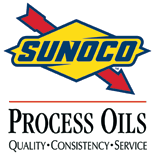![[ Visit ACS Rubber Website ]](images/logo.jpg) |
|
Centennial Elite SponsorsBecome a Centennial Elite Sponsor |
Fundamental Models for Accelerated Sulfur VulcanizationMonday, May 4, 2009: 9:55 AM
Akron/Summit Ballroom (Akron/Fairlawn Hilton Hotel)
The kinetics of vulcanization has been a long standing area of research; however, a fundamental understanding is not complete due to two factors. First, rubber is a complex mixture of elastomer, sulfur, accelerator, activator and other components. Second, the development of quantitative micro-kinetic models for vulcanization is challenging, because of the large number of reaction intermediates and products due to the polysulfidic nature of the various species. Advanced computational tools now enable the development of fundamental vulcanization models. Population balance models can account for all reacting species, where special purpose chemical compilers can quickly generate and solve these complex kinetic expressions from near-English language chemistry rules. Computational quantum chemistry can be used to determine how kinetic constants change with molecular structure of the species. Finally, optimization methods in concert with experimental data can be used to (i) evaluate kinetic models and rate constant and (ii) distinguish between candidate kinetic mechanisms. This paper will provide a summary of these new tools for developing mechanistically-based, quantitative models for accelerated vulcanization. These tools will be applied to determine a quantitative description of MBS accelerated sulfur vulcanization of natural rubber and in addition determine the detailed mechanism of sulfur pick-up by MBTS.
|










